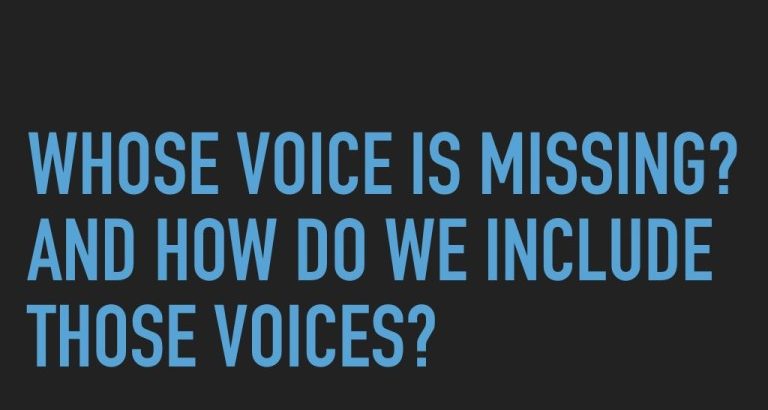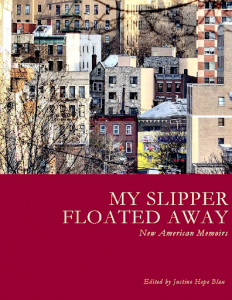Private: Teaching and Advocating for Open
26 Inclusive OER and Open Pedagogy
As you work on developing OER and integrating it into your teaching, you will need to make sure that what you create is responsive to your students’ needs and reflects their voices and realities. It can be difficult to make sure that your resources and instructional practices are inclusive, and it is a process that can be revisited over time. It’s never too late or too early to start thinking about making your OER as inclusive and as accessible as possible. This chapter combines Abbey Elder’s “Diversity and Inclusion” chapter from The OER Starter Kit and a case study by Justine Hope Blau.[1]
Diversity and Inclusion
Adaptability and affordability are two major aspects of what makes an open educational resource attractive to students, but there is another facet that should be considered when you are developing or adapting an OER for your course: perspective. In particular, you should ask yourself how the perspectives being represented in your OER might affect the of your course environment.

As Quill West argues in her blog post on diversity and inclusion in open education:
“As important as access is to students and to institutions, it is a starting place for leveraging other benefits of OER, and I hope that our conversations about [open education] go beyond access, because saving money on materials doesn’t address bigger issues in student persistence and completion.”[2]
In this chapter, we will discuss some of the opportunities and drawbacks of using OER to promote inclusivity in your courses.[3]
Merriam-Webster defines diversity as “the inclusion of different types of people (such as people of different races or cultures) in a group or organization.”[4] Diversity is often perceived as an organizational goal or ethical preference: for OER, including diverse perspectives is vital.
Diversity in open education can be achieved by including a variety of sociological perspectives in your open content. Doing this ensures that your students can identify with and relate to your course material. Critical here is ensuring that other cultures are presented accurately in your materials, and not according to stereotypes or perceptions based on the standards of your own culture.[5]
Whether intentional or not, ethnocentrism — “a tendency to view alien groups or cultures from the perspective of one’s own” — can creep into the content and presentation of your course materials, and it is something all authors should be aware of. This doesn’t mean you must create course content that accurately portrays and includes all cultures and perspectives; however, you should be respectful toward other people and be aware of your biases as they arise.
One way you can accomplish this is by explicitly acknowledging the perspectives that are included in your content and those which are not. How has your social and cultural background reflected on the work you’ve created? What authors are being cited and acknowledged in your work, and why? Acknowledging that your perspective is limited while including other perspectives in your work can be an incredibly rewarding experience. Some benefits of including diverse perspectives in your course content include:
- Engaging more students because they recognize themselves or their life experiences in your course content
- Sharing content that appeals to instructors in a variety of educational settings
- Creating a more interesting reading and learning experience for your students and learners around the world
If you aren’t certain about how or where to add examples relevant to other cultures, that doesn’t mean your resource will never include these perspectives. Thanks to your OER’s open license, once your resource has been published, instructors from other countries, cultures, and socioeconomic backgrounds might choose to remix your work for their course’s needs. The changes they make might include:
- Translating the book into a different language
- Adjusting the content to meet the local cultural, regional, and geographical interests
- Revising the material for a different learning environment
Another option for making your work more inclusive from the beginning is to consider inviting instructors and professionals in your field to contribute to your OER; however, you should be aware of the ways in which your project’s design may deter or welcome people of other ethnicities, races, and cultural backgrounds.[6] For example, you may have set up regular meetings for those collaborating on your project at a time that is not feasible for a scholar living in a different time zone. Keep this and other considerations in mind if you would like people from other countries to collaborate on your project.
Advancing Inclusivity through Open Pedagogy
As we covered in our section about teaching with OER, open pedagogy can be a powerful tool for letting students take control over how they engage with and relate to their course content. In some ways, engaging students in the creation of OER can be seen as the ultimate way of allowing them to see themselves reflected in their work.
However, there can be some concerns with this approach as well. For example, your student body might be composed of a majority of one race, sex, or class, making the total “picture” of the course content created by your students less inclusive overall.[7] Here are some considerations to keep in mind when having students create course content, especially if your course is covering a topic related to sex, race, or cultural studies:
- Ask students for their input on the inclusivity of your resources
- Think about how your OER could be more diverse (pictures, examples, etc)
- Watch out for harmful depictions of diverse populations from your students. Have a plan in place to address issues if they arise
Fostering an environment of inclusion where your students can engage with different cultural norms is an important aspect of the college experience, whether you are teaching Physics or Criminal Justice. Although it might be daunting to jump into creating an inclusive educational resource, keep in mind that OER can be improved upon and continually revisited by yourself and others.
Start by finding or creating an OER that works for you and avoiding pitfalls like ethnocentric and trans-exclusionary language. You can always revisit your chosen OER or work with others to improve upon it by adding more diverse examples later on.
Don’t “Other” Your Students
When attempting to make your course materials more inclusive for your students, the first thing you should watch out for is the possibility of “othering” your students. Merriam-Webster defines othering as “treating or considering (a person or a group of people) as alien to oneself or one’s group (as because of different racial, sexual, or cultural characteristics).”[8] Some best practices for avoiding othering include:
- Never assume your audience’s gender and/or gender identity, ability, or sexual orientation.
- Avoid calling the most commonly seen traits in your context “normal.”
- Make materials accessible for all students at all times.
A Case Study – Showing Students Their Stories Matter by Justine Hope Blau[9]

This summer I published, on the CUNY Academic Commons, an anthology of essays written by my students at Lehman College in the Bronx. I teach memoir writing workshops and most of my students are immigrants, first-generation American, and/or people of color. Here are some takeaways about the process:
My students write about growing up hearing gunshots and police sirens at night, using fire escapes as basketball hoops, and a ritual I’d never heard of: dancing at Thanksgiving. One student wrote about how he and his brother, at ages 11 and 14, had to fend for themselves after their father was deported.
The title of the anthology — My Slipper Floated Away: New American Memoirs — comes from Steven Ngin’s gripping story of fleeing from the genocidal Khmer Rouge regime in Cambodia when he was four years old. He rode on his father’s back as they crossed the Mekong River and watched his slipper float away; the metaphor also works for the other students’ essays because they too are permeated by the theme of people moving forward after sustaining losses.
I’m a born-and-bred New Yorker and I thought I had a cosmopolitan understanding of the world – but I was amazed by my students’ fresh perspectives. At a time when our nation is so polarized, I felt driven to collect these stories and get them distributed, both to people who are afraid of immigrants and POC, and also for those millions of immigrants and POC, who will be heartened to see how stories similar to their own are enriching American literature.
It took me over two years to publish the anthology. I edited the essays, wrote the introduction, got 25 students to sign author-agreement forms and searched for a cover illustration. (Online I found an impressionistic photo of a Bronx cityscape and photographer Joe Raskin let me use it.) I also arranged for a librarian to explain copyright law to my students; they chose to allow open access for non-commercial use. Finally, I thought that all I had to do was upload a PDF to the CUNY Academic Commons — but it was not that simple. It took me over two years to publish the anthology. I edited the essays, “My Slipper Floated Away: New American Memoirs” book coverwrote the introduction, got 25 students to sign author-agreement forms and searched for a cover illustration. (Online I found an impressionistic photo of a Bronx cityscape and photographer Joe Raskin let me use it.) I also arranged for a librarian to explain copyright law to my students; they chose to allow open access for non-commercial use. Finally, I thought that all I had to do was upload a PDF to the CUNY Academic Commons — but it was not that simple.
Several librarians, including Stacy Katz at Lehman, explained that a 168-page pdf is unwieldy and would take too long for readers to load on their laptops or cell phones. They spent a lot of time formatting the document and dividing it into sections so it would load quickly. At Stacy’s suggestion we used the Manifold platform to host the anthology.
The stories in My Slipper Floated Away are available for free, and licensed Creative Commons Attribution – Noncommercial – No-Derivatives License (CC-BY-NC-ND). We encourage librarians, professors of Ethnic studies, and teachers of advanced ESL to use these stories as reading material. Please share liberally.
Justine Hope Blau presented her work at the Sept 16, 2020, CCCOER webinar, “Decolonizing the Course.”
- This first half of this chapter was taken from "Diversity and Inclusion" from The OER Starter Kit by Abbey K. Elder is licensed under a Creative Commons Attribution 4.0 International License, except where otherwise noted. ↵
- West, Quill. "Overview of EDI and Open Education." CCCOER blog, June 28, 2018. https://www.cccoer.org/2018/06/28/on-equity-diversity-inclusion-and-open-education/ ↵
- "Diversity & Inclusion" was adapted from Including all students by SUNY OER Services, licensed CC BY 4.0. ↵
- Merriam-Webster's Dictionary. "Diversity." Accessed June 1, 2019. https://www.merriam-webster.com/dictionary/diversity ↵
- Adding examples from other cultures is a good practice; however, if you don't know much about the type of people you are "including" in your resource, your inclusion might feel like alienation for students who belong to that group. ↵
- Rebus Community. "Diversity, Equity, and Inclusion in OER." YouTube video, 55:00. September 29, 2017. https://youtu.be/rUiyiAT0uMQ ↵
- Bali, Maha. "Critical Pedagogy: Intentions and Realities." Hybrid Pedagogy. September 9, 2014. http://hybridpedagogy.org/critical-pedagogy-intentions-realities/ ↵
- Merriam-Webster's Dictionary. "Other." Accessed May 12, 2019. https://www.merriam-webster.com/dictionary/other ↵
- This case study comes from "Showing Students Their Stories Matter" by Justine Hope Blau, from CCCOER's guest blog post,. Equity & Openness: Perspectives from North American colleges and universities. Retrieved on February 2, 2021 from https://www.cccoer.org/2018/10/09/on-equity-diversity-inclusion-and-open-education/. ↵

